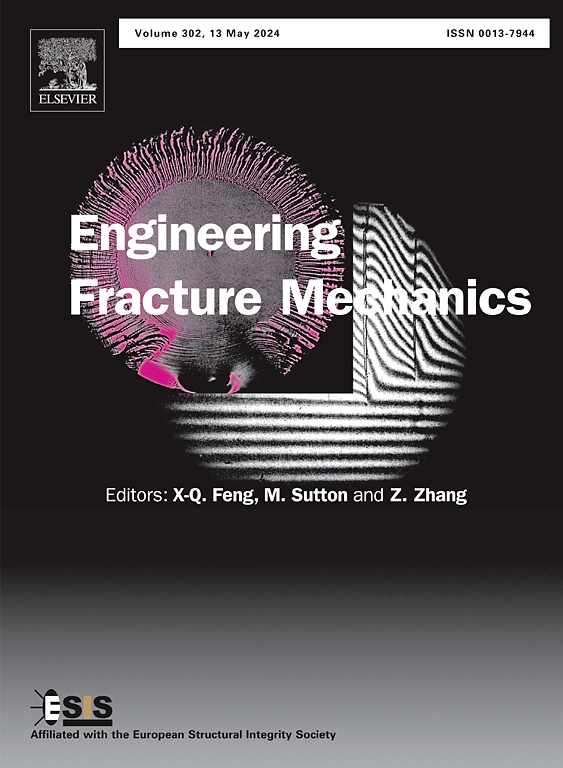Elastoplastic constitutive modeling for subsea pipeline steels considering hydrogen-induced dislocation pinning and depinning
IF 4.7
2区 工程技术
Q1 MECHANICS
引用次数: 0
Abstract
Four-stage elastoplastic constitutive models for subsea pipeline steels in gaseous hydrogen environment are proposed, in which the impact of hydrogen-induced dislocation pinning and depinning on the elastoplastic mechanical behavior of pipeline steel is taken into accounted. The proposed constitutive models are developed in terms of the phenomena observed in nanoindentation experiments. The variation of yield strength of pipeline steel during hydrogen-induced dislocation pinning and depinning, as well as the subsequent strain hardening, are reflected in the proposed constitutive models. Developed constitutive models are then incorporated into a cyclic cohesive zone model (CCZM) for predicting hydrogen-assisted fatigue crack growth (FCG) rate. A comparison between predicted results of the CCZM incorporated with the proposed elastoplastic constitutive models and experimental data of hydrogen-assisted FCG rates of API pipeline steels is conducted and the results show that the predicted FCG rates agree well with the experimental data. In addition, the impact of model parameter for describing the depinning stage on the hydrogen-assisted FCG rate are also discussed.
考虑氢致位错钉钉和脱剥落的海底管线钢弹塑性本构模型
提出了气氢环境下海底管线钢的四阶段弹塑性本构模型,该模型考虑了氢致位错钉钉和脱钉对管道钢弹塑性力学行为的影响。提出的本构模型是根据纳米压痕实验中观察到的现象建立的。本文提出的本构模型反映了管道钢在氢致位错钉钉和脱屑过程中屈服强度的变化以及随后的应变硬化过程。然后将开发的本构模型纳入循环黏合区模型(CCZM),用于预测氢辅助疲劳裂纹扩展(FCG)速率。结合本文提出的弹塑性本构模型的CCZM预测结果与API管道钢氢辅助FCG速率的实验数据进行了比较,结果表明,预测的FCG速率与实验数据吻合较好。此外,还讨论了描述脱屑阶段的模型参数对氢辅助FCG速率的影响。
本文章由计算机程序翻译,如有差异,请以英文原文为准。
求助全文
约1分钟内获得全文
求助全文
来源期刊
CiteScore
8.70
自引率
13.00%
发文量
606
审稿时长
74 days
期刊介绍:
EFM covers a broad range of topics in fracture mechanics to be of interest and use to both researchers and practitioners. Contributions are welcome which address the fracture behavior of conventional engineering material systems as well as newly emerging material systems. Contributions on developments in the areas of mechanics and materials science strongly related to fracture mechanics are also welcome. Papers on fatigue are welcome if they treat the fatigue process using the methods of fracture mechanics.

 求助内容:
求助内容: 应助结果提醒方式:
应助结果提醒方式:


